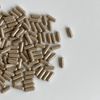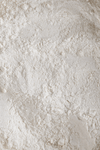Raw Milk vs. Pasteurized Milk
There is an enormous difference between the pasteurized milk you buy in the store and the fresh milk your great-great-grandparents enjoyed...
Their milk was raw and unpasteurized and, in our opinion, is one of the few things on this planet that truly deserves the designation "Superfood."
Because raw milk is full of friendly "good" bacteria, living enzymes, immunoglobulins, peptides, bioavailable vitamins and minerals...
This means that it is incredibly nutritious and has natural healing properties that can strengthen the immune system and have a positive effect on allergic diseases, among other things.
For example, this study found that children who drank raw milk were less likely to develop asthma and hay fever...
And the earlier in life they started drinking raw milk, the more effective the protection.
So we say it again: Fresh, raw milk and conventional pasteurized milk are not the same.
Raw milk is more delicious and nutritious...
Pasteurization damages or destroys many of the nutrients contained in raw milk...
The result is a milk that has been stripped of its natural healing powers. Its digestibility is impaired. It is dead milk.
The Decline of Milk as We Knew It
Until relatively recently, there was no such thing as "raw milk."
Raw milk was just normal milk that people had been drinking for thousands of years.
Even just 100 years ago, most American family farms kept at least one milk cow...
And that cow often meant the difference between surviving and thriving.
It fed the family not only with milk, but also with butter, cream, and cheese...
So what happened? How did raw milk get replaced by its pasteurized cousin?
Well, it started about 150 years ago during the industrial revolution...
As people flocked to cities like New York, Boston, and Philadelphia, it became impractical to supply them with fresh milk from farms.
Dairy cows need a lot of pasture, and since refrigeration and rapid transport were still in their infancy, dairy cows were housed in warehouses on the outskirts of the city to supply the population with milk.
The cows were kept out of the sun and pastures and were given poor feed, mostly grain that was a byproduct of urban breweries and distilleries.
Not surprisingly, the cows got sick and the quality of the milk also decreased.
Add to that the poor hygienic conditions and poor refrigeration, and the result was a lot of health problems that led to a scandal in the dairy industry.
Raw milk, which had been safe to drink for thousands of years, quickly became seen as a dirty and dangerous food.
Pasteurization was seen as the solution.
While it made it possible to market dirty milk, it did not make it possible to produce clean milk from healthy cows.
Over time, pasteurization became established and became the standard for ensuring "safe" milk, even though pasteurization changes the fundamental nature of this superfood.
Raw Milk: Summary
Firstly, raw milk is tastier and more nutritious!
Secondly, it's important to know where our food comes from and how healthy the animals are that provide it.
That's why we advocate for raw milk, but only from high-quality sources.
This is also why all the products we import and produce ourselves come exclusively from grass-fed animals.
Where can I find raw milk?
Your first step should be to meet farmers in your area. We recommend visiting a farmer's market near you. Start a conversation with them and don't hesitate to ask questions!
If you still can't find fresh raw milk, then you should definitely check out our Colostrum products...
These are made from grass-fed and refined colostrum, the highly concentrated first milk from cows. It's probably our favorite supplement, and we don't say that lightly!
But what if I have a milk intolerance?
If you think you can't tolerate dairy products but want to be sure, it's worth testing how you tolerate raw milk compared to pasteurized milk.
The amazing thing about raw milk is that many people with a lactose intolerance tolerate it without any problems.
Why is that? Because raw milk contains everything necessary for digestion, e.g. live lactase-producing bacteria and active digestive enzymes.
There are also two types of milk: A1 and A2. A1 milk is the most common, while A2 milk is only found in a small percentage of cows and other ruminants such as buffalo, goats and sheep...
In general, the less common A2 milk is easier to digest and less problematic than the more common A1 milk.
So if you have a milk intolerance, try grass-fed A2 raw milk!
We recommend experimenting to find out what works best for you.
Avoid all dairy products for at least two weeks and then reintroduce A2 raw milk in small amounts.
Observe how you feel. If you can tolerate it, great! If not, then it's probably best to eliminate it from your diet.
And remember, whatever you do, avoid soy milk....









